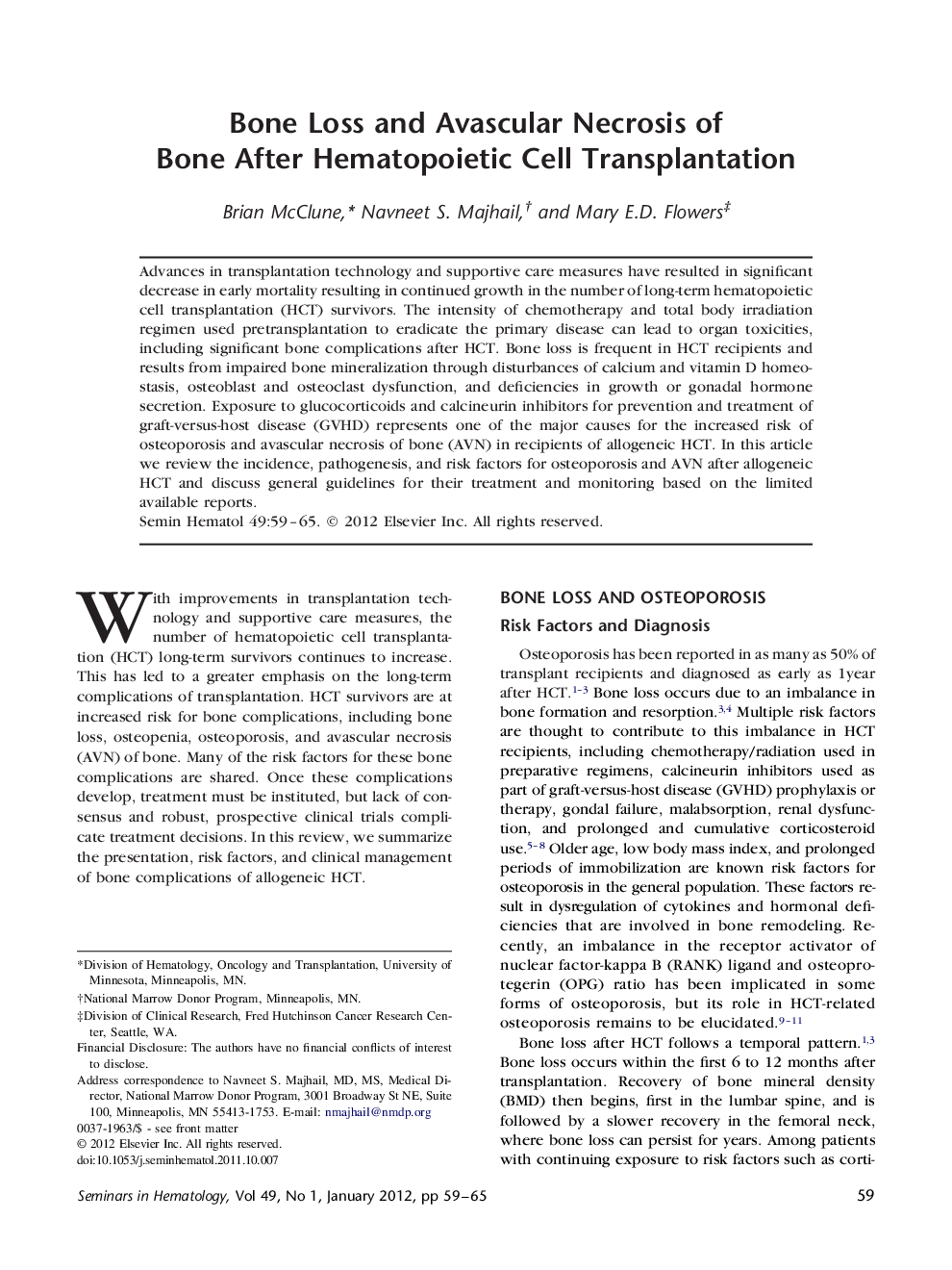| Article ID | Journal | Published Year | Pages | File Type |
|---|---|---|---|---|
| 3333657 | Seminars in Hematology | 2012 | 7 Pages |
Advances in transplantation technology and supportive care measures have resulted in significant decrease in early mortality resulting in continued growth in the number of long-term hematopoietic cell transplantation (HCT) survivors. The intensity of chemotherapy and total body irradiation regimen used pretransplantation to eradicate the primary disease can lead to organ toxicities, including significant bone complications after HCT. Bone loss is frequent in HCT recipients and results from impaired bone mineralization through disturbances of calcium and vitamin D homeostasis, osteoblast and osteoclast dysfunction, and deficiencies in growth or gonadal hormone secretion. Exposure to glucocorticoids and calcineurin inhibitors for prevention and treatment of graft-versus-host disease (GVHD) represents one of the major causes for the increased risk of osteoporosis and avascular necrosis of bone (AVN) in recipients of allogeneic HCT. In this article we review the incidence, pathogenesis, and risk factors for osteoporosis and AVN after allogeneic HCT and discuss general guidelines for their treatment and monitoring based on the limited available reports.
